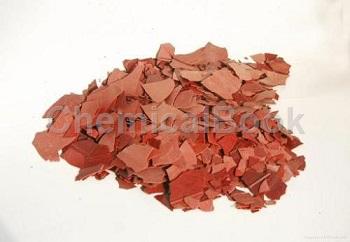Sodium sulfide is also called stinky alkali, stinky soda, yellow alkali, and alkali sulfide. Sodium sulfide is an inorganic compound, and pure sodium sulfide is a colorless crystalline powder. It has strong moisture absorption and is easily soluble in water. The aqueous solution shows a strong alkaline reaction. Causes burns on contact with skin and hair. Therefore, sodium sulfide is commonly known as alkali sulfide. Sodium sulfide aqueous solution will slowly oxidize in the air to sodium thiosulfate, sodium sulfite, sodium sulfate and sodium polysulfide. Since sodium thiosulfate is generated quickly, the main product of oxidation is sodium thiosulfate. Sodium sulfide deliquesces in the air, carbonates and deteriorates, constantly releasing hydrogen sulfide gas. Industrial sodium sulfide contains impurities and its color is pink, brown-red, or earthy yellow. Specific gravity, melting point, and boiling point also vary due to the influence of impurities.

Physical properties
The pure product is a colorless or slightly purple prismatic crystal at room temperature, while the industrial product is often pink, brownish-red, or khaki in color due to impurities. Has a foul odor. Soluble in cold water, easily soluble in hot water, slightly soluble in alcohol. Industrial products are generally mixtures of different forms of crystallized water and contain varying degrees of impurities. In addition to different appearance and color, density, melting point, boiling point, etc. also vary due to the influence of impurities.
Chemical properties
It decomposes in acid to produce hydrogen sulfide. It deliquesces in the air, gradually undergoes oxidation, and generates hydrogen sulfide when exposed to acid. It may explode if hit by impact or high heat. When exposed to acid, toxic hydrogen sulfide gas is released, and anhydrous alkali sulfide is flammable. It emits toxic sulfur oxide smoke when heated. Health hazards: This product can decompose hydrogen sulfide in the gastrointestinal tract, and can cause hydrogen sulfide poisoning after oral administration. Corrosive to skin and eyes. Hazardous characteristics: May explode upon impact or rapid heating. It decomposes when exposed to acid and releases highly toxic flammable gas. Combustion (decomposition) products: hydrogen sulfide, sulfur oxide. Acute toxicity: LD50: 20 mg/kg (oral injection in mice); 950 mg/kg (intravenous injection in mice). Relevant chemical reaction equation: 2Na+S=Na2S.
Application fields
1. It is used in the dye industry to produce sulfur dyes and is the raw material for cyan sulfide and sulfide blue. In the printing and dyeing industry, it is used as a dyeing auxiliary to dissolve sulfur dyes. In the tanning industry, it is used to hydrolyze raw hides and skins to remove hair. It is also used to prepare sodium polysulfide to accelerate the soaking of dry hides in water to help soften them. In the paper industry, it is used as a cooking agent for paper. In the textile industry, it is used for denitrification and nitrate reduction of man-made fibers, and as a mordant for dyeing cotton fabrics. It is used in the pharmaceutical industry to produce antipyretics such as phenacetin. In addition, it is also used to make sodium thiosulfate, sodium hydrosulfide, sodium polysulfide, etc.
2. Adding an appropriate amount of sodium sulfide to the alkaline etching solution for aluminum and alloys can significantly improve the etching surface quality. It can also be used to remove alkali-soluble heavy metal impurities such as zinc in the alkaline etching solution.
3. Sodium sulfide can also be used to treat the conductive layer in direct electroplating. The reaction between sodium sulfide and palladium generates colloidal palladium sulfide to form a good conductive layer on the non-metal surface.
4. Used as corrosion inhibitor. It is also the raw material for sodium thiosulfate, sodium polysulfide, sulfur dyes, etc.
5. Used in the manufacture of sulfur dyes, leather depilatories, metal smelting, photography, rayon denitration, etc.

 微信扫一扫打赏
微信扫一扫打赏

